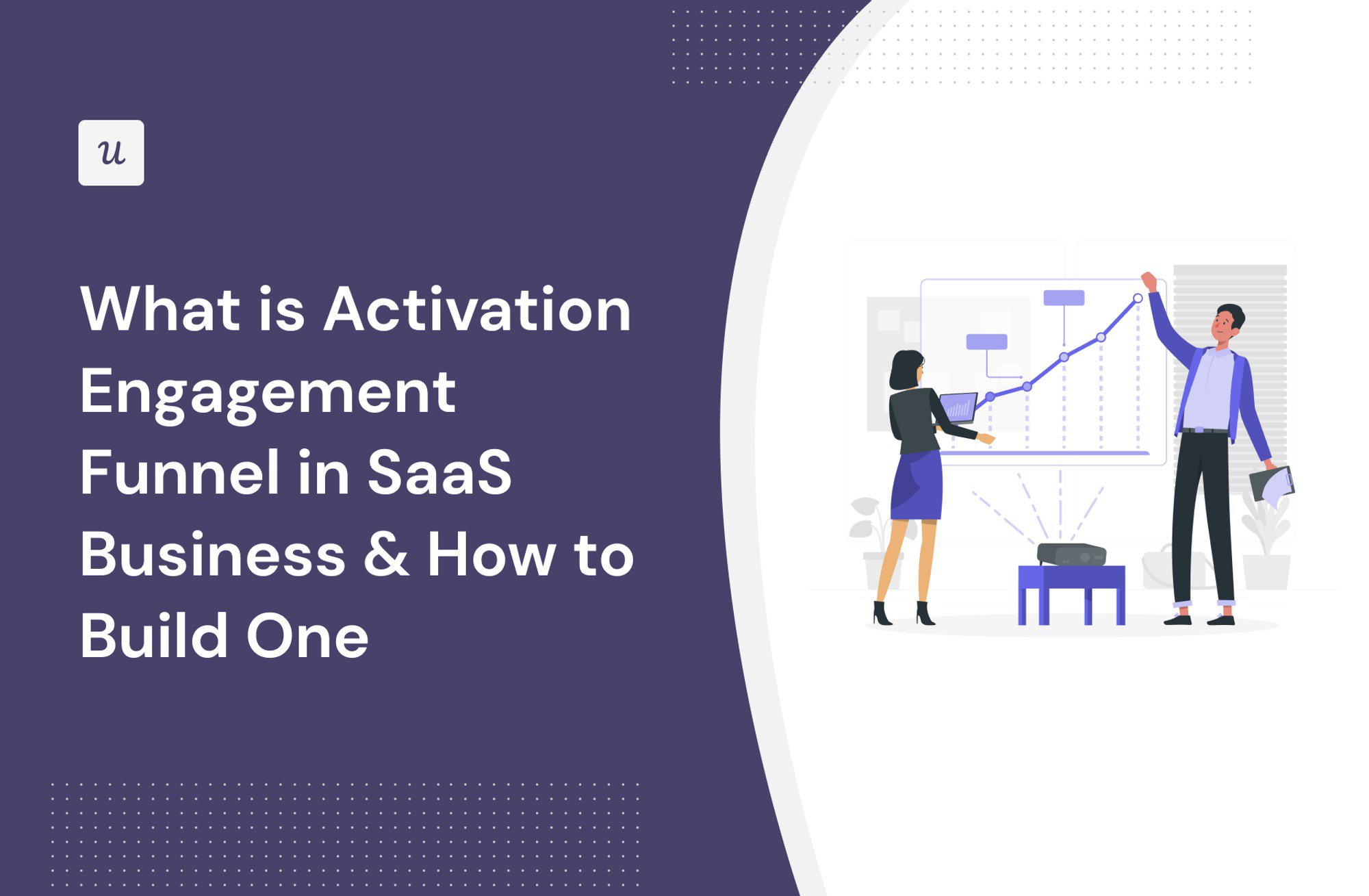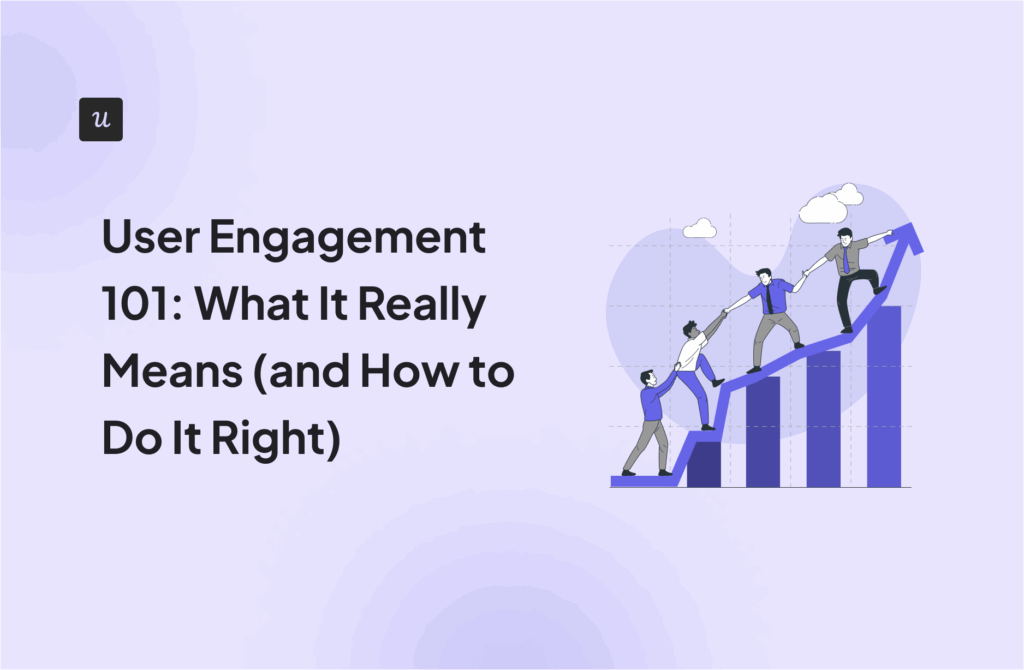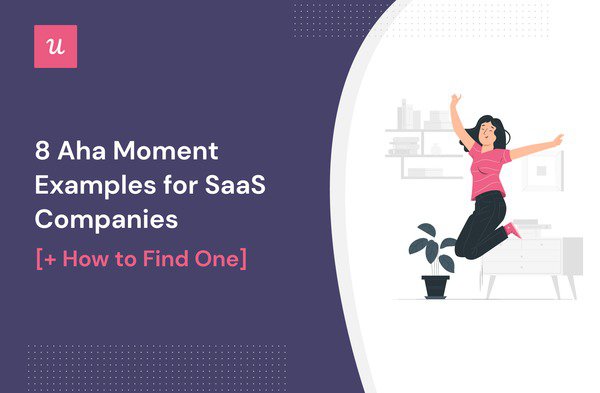
What is Activation Engagement Funnel in SaaS Business & How to Build One
What is the role of the activation-engagement funnel for SaaS companies? How to build funnels for effective user engagement?
These are some of the main questions we discuss in the article, so if you’re after the answers, you’re in the right place!
Let’s dive in!
Try Userpilot Now
See Why 1,000+ Teams Choose Userpilot

Summary of activation engagement funnel
- The user activation funnel is a sequence of steps in the user’s journey from the moment they learn about the product until they become active users.
- The sales funnel maps out the sales process which covers a wider customer journey than the activation funnel.
- User activation happens when they start realizing the product value. This is essential for product adoption, user retention, conversion to premium plans, and referrals.
- Start building your activation-engagement funnel by defining your user personas as each of them needs a unique funnel.
- Next, identify the activation points for each of the personas. That’s the moment when they start deriving product value.
- Relevant metrics to track include customer activation rates, stickiness, adoption rates, churn rates, and retention rates.
- Path analysis can help you identify the happy path to activation for your user personas.
- Funnel analysis is a tool designed to measure how effectively users move down the funnel and discover friction points in the user journey.
- To reduce the time to value, personalize the onboarding experience for each user persona.
- For maximum user engagement, use a combination of channels for communication.
- Onboarding checklists and interactive walkthroughs guide users through the sequence of actions necessary to activate.
- Self-service resources allow users to solve their problems as soon as they appear, which reduces the risk of churn.
- Contextual in-app experiences engage users and support them when they most need it.
- A/B testing is an effective way to choose the most effective in-app experiences to boost user activation.
- Product analytics, especially AI-powered, can help teams identify patterns in user behavior and warn them about potential churn risks.
- To gain a complete understanding of user experience, collect feedback from churned users.
- Want to learn how Userpilot can help you build a robust activation-engagement funnel? Book the demo!
What is a user activation funnel?
A user activation funnel is a framework mapping out the steps in the journey a potential user takes, from first learning about the product to becoming an active and engaged user.
What could be the stages in the activation funnel?
- Awareness – when potential customers discover the product, for example, by reading a blog post.
- Sign-up – when they sign up for the free plan or free trial.
- The Aha! moment – when they first experience the product value.
- Activation – when they start realizing the value.

Activation funnel vs sales funnel
Activation and sales funnels are both central to understanding customer acquisition in SaaS but they serve different purposes and focus on different stages of the customer journey.
The activation funnel is specifically focused on the user’s journey from initial exposure to the product to becoming an active user. Its primary goal is to convert new sign-ups or trial users into active users.
In contrast, the sales funnel covers a broader journey of converting prospects into paying customers. It focuses on generating leads, nurturing them, and ultimately closing sales.
Why is user activation important?
To explain why user activation is important, let’s go back to its definition.
So activation happens when the user experiences the product value and starts realizing it.
As such, this is a critical stage in the customer journey and the foundation of the product-led growth model.
Without experiencing the product value first-hand and understanding how it can help them achieve their goals, you users won’t:
- Adopt the product as a solution to their pain points.
- Convert to paid customers, or upgrade to higher plans.
- Recommend the product to their friends.
How to build a killer activation funnel to increase the number of activated users
Considering the importance of user activation, let’s look at a few processes that are essential for building an effective activation funnel.
Define user personas for your SaaS business
User personas are imaginary characters representing your target product users.
For example, the key user personas for Userpilot are the product marketing manager, product manager, UX/UI designer, and customer success manager.
To build a successful activation funnel, you need to know who your user personas are, along with their JTBDs, pain points, roles in the company, and the benefits they derive from using the product.
Why does it matter?
As different user personas have unique needs, each of them will require a different activation funnel focusing on functionality relevant to their use cases.

Identify your activation point
Once you define your user personas, list the activation points for each of them.
These depend on the product and can be as simple as completing an activation event or fairly complex.
For example, for Slack, the popular business communication platform, users reach the activation point when they send about 2000 messages while for Uber it’s booking the first ride.
Define your activation metrics
To effectively track user progress down the funnel, you select a set of activation metrics to monitor.
Many SaaS teams follow these:
- Customer activation rate – the percentage of customers who have reached the activation point.
- Customer stickiness – the ability of a product to retain customers, measured by how frequently and consistently users engage with the product (the DAU:MAU ratio).
- Adoption rate – the percentage of users who have embedded the product into their workflow and use it habitually to solve their problems.
- Churn rate – the percentage of total sign-ups that have stopped using the product.
- Retention rate – the percentage of users who continue using the product over a period of time.
Identify the happy path for new customers
How do you know the best way for your new users to reach the activation milestones?
As a product, marketing, or customer success manager, you already have a good understanding of your product and how to quickly get users to immediate value.
If not, a path analysis can help.
In a nutshell, this kind of analysis helps you map out all the existing customers’ actions leading up to a conversion point. Thanks to that, you can identify the happy path for each user persona. By replicating it, new users can reach the activation stage in the most optimal way.

Measure the success of your activation funnel
With users flying up the happy path, your job is done.
Almost.
After all, you can always refine the funnel by removing unnecessary friction.
Funnel analysis is the tool for the job.
This kind of report provides you with insights into how many users progress from one stage to another and how long it takes them. If the conversion rate is too low or users take too long to convert at a particular step, that’s the area for optimization.

Best practices for building a successful activation funnel
What do you do if the funnel analysis reveals friction? How can you help users progress down the funnel faster and more enjoyably?
Here are a few tips and tricks that can help.
Personalize the user journey for new users
As mentioned, each user persona has a different activation funnel because of their different goals and pain points.
If so, you need to tailor the in-app experience for each of them.
To do so, collect user data in a welcome survey and use it to segment users.
Next, lean into the insights from path analysis to design a personalized onboarding experience for each of the main segments, and trigger them for new users.
Such personalized flows help users discover the relevant features and complete the activation events in less time than generic one-size-fits-all ones.

Adopt an omnichannel engagement strategy
To boost activation, don’t rely on a single channel to keep your users engaged. Instead, develop an engagement strategy that leverages multiple channels.
For example, the 2-way Userpilot integrations with Hubspot and Salesforce, allow you to sync user data between the platforms and engage them with in-app notifications as well as emails, and instant or text messages.
Thanks to that, you can drive user engagement even if they don’t log back into the product after the initial session.

Use an onboarding checklist to drive users to the activation points
An onboarding checklist is the most effective way to lead users across the activation points. Hands down!
Why?
First, checklists are clear to understand and follow. They tell users exactly what they have to do to realize the product value and in what order.
Secondly, they rely on a very strong psychological desire to finish what we’ve planned. You can say that humans are programmed to tick off checklist tasks: the more you get done, the stronger the urge to carry on.
This works particularly well when your checklist contains a progress bar showing users how far they have to go.

Offer users a self-service option for resolving issues
What happens if a user comes across a roadblock on the way to activation? Like a complex feature that they can’t understand?
You need to help them overcome it or they will give up and churn.
Some users still prefer traditional high-touch support from customer success agents – via phone, chat, or email.
However, increasing numbers of users would rather avoid this because it introduces additional friction. After all, they’re dependent on the availability of the person at the other end.
The alternative option is self-service support resources, for example, in the shape of a resource center or knowledge base, where user can find solutions to their problems.

Drive feature engagement with interactive walkthroughs
Interactive walkthroughs are sequences of in-app messages like tooltips that prompt users to engage with product features.
They are similar to checklists in that they also guide them through the key functionality and actions necessary to activate.
However, they are less structured – they allow users to choose which feature to use and which to skip.
This reflects the fact that activation in SaaS isn’t necessarily a linear process and gives users a bit more autonomy to explore the product at their own pace while still providing the necessary guidance.

Create contextual in-app experiences based on user behavior
You can trigger your walkthroughs or in-app messages at a specific time, for example, when the user first logs in.
An alternative approach is using contextual triggering. That’s when the flows are triggered when the user completes a specific event.
For example, when they complete one activation event, a tooltip prompting them to complete the next one could appear.

A/B test different flows to drive engagement
A/B testing is a popular experimentation method used by SaaS teams to choose the best-performing version of the product, feature, design, or onboarding flow.
To carry out the test, you design two versions of the same flow. Next, you select a group of users sharing certain characteristics and divide it randomly into 2 different subgroups. Each of them gets to experience one of the versions at the same time while you track their performance.
The benefit of A/B testing is that you can validate your ideas with real users without rolling out the new flow or feature to the whole user population, which significantly reduces the risk.

Analyze product usage to identify and re-engage inactive users
As a SaaS product manager, you’re very lucky because all user interactions with the product take place in the digital space.
This makes them easy to track: if your analytics platform recorded an activity, it means it hasn’t happened.
That’s how you can easily identify and re-engage inactive users, for example, by sending them an email.

Use AI to get actionable product usage insights
Some patterns in user behavior may not be easy to spot.
Fortunately, AI is here to help.
You can easily feed product usage data to chatGPT and prompt it to analyze for patterns.
Better yet, more and more product analytics platforms are working to develop AI-powered features that would allow you to extract actionable insights from user behavior data and make accurate forecasts. That’s how you can identify churn warning signs.
Such functionality will be available in Userpilot in 2024.

Collect feedback from churning users to improve the customer journey
Product analytics will tell you when users churn but not necessarily why.
What’s the solution?
User surveys.
This could be in-app surveys triggered when the user tries to cancel their subscription or is navigating towards the exit button.
However, their application is limited because they don’t allow you to reach the users who have left for good. You may not be able to win them back, but such users can still offer valuable insights on how to improve the user experience.
To get the survey in front of them, deliver them by email. Or reach out to them and invite them to an interview.

Conclusion
An effective activation-engagement funnel is essential for product success, especially in the PLG model. It’s necessary for users to experience the product value and progress through the further stages of the customer journey, like adoption, revenue, and referral.
If you want to learn how Userpilot can help you refine your activation funnel, book the demo!








